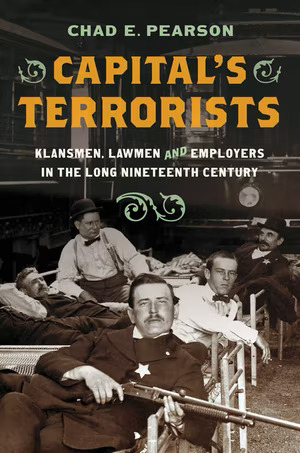Few will disagree with the claim that the hypersecretive Klan was a terrorist organization. The large, mostly decentralized employers’ association, led mainly by downwardly mobile planters, merchants, lawyers, and newspaper owners, used different forms of terrorism to control and exploit the black masses while challenging all forms of outside interference. Klansmen burned black schoolhouses and books and chased numerous teachers from communities. In many cases, their run-out campaigns were intimidating but not physically violent. Hooded men greeted teachers at their residences, where they provided stark ultimatums. Threatening visitors usually demanded that their targets leave by a certain time.
Klan members beat and killed thousands of African Americans. They did so for two basic reasons: to discipline the “violators” and to send an unmistakable message to others. Demonstrating total intolerance for any acts of dissent, Klansmen whipped black men and women for idleness, for seeking to vote, for participating in post–Civil War Union Leagues, or simply for leaving farms and plantations. They also kidnapped. While they snatched outside educators to expel them from communities, Klansmen sometimes abducted former slaves to return them to farms and kitchens. And Klansmen murdered rebellious African Americans if they believed these targets were excessively defiant.
The thousands of terrorist actions initiated by Klansmen and similar organizations helped to empower the region’s ruling class, establishing what W. E. B. Du Bois called the “counter-revolution of property.” Many others practiced Klan-like tactics during encounters with disruptive workers. In the late 1880s and early 1890s, no set of private sector organizations were more thuggish and effective than the Law and Order Leagues, the businessmen-led organizations that battled protesters during strikes and expelled socialists and anarchists from communities. Emerging in both modest-size communities and large cities in Kansas and Missouri during the massive strike against Jay Gould’s railroad empire in the spring of 1886, the leagues quickly spread to regions in the West and South.
In these communities, business owners, managers, lawyers, and politicians met secretly in safe houses, took up arms, bullied unionists and leftists, and accompanied scabs across picket lines. These organizations were critical in crushing strikers, creating the conditions that led to resumed commerce and the restoration of “law and order” in numerous communities.
League members also practiced less aggressive but nevertheless terrifying methods of repression, including terminating labor activists and sharing blacklists of these people with one another. The blacklisting process, which involved the participation of those responsible for dismissing workers as well as employers and journalists elsewhere, traumatized and disciplined both the direct victims and those who held on to their jobs. Employers openly badmouthed rebellious workers and shared actual lists with one another.
